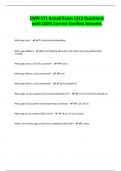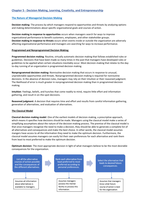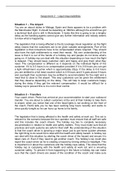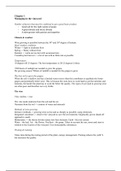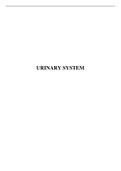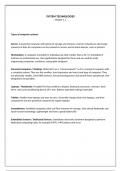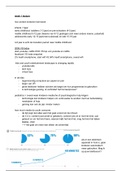Observations
Observations can be used as a form of research or as a way of collecting data as part of an
experimental context.
Research aim – the concept that the researcher wants to investigate, which will be fairly specific as it
reflects what the researcher directly wants to find out about, i.e., to see if babies get upset when
their parents leave the room.
Research question – a question involving the research aim in some way, i.e., do babies become upset
when their parents leave the room?
Observations can centre around 5 main questions:
1) Who is being observed? (i.e., age, gender, nationality, sample size, sampling method)
2) What is being observed? (i.e., in terms of a particular behaviour)
3) Where is the observation? (i.e., naturalistic or controlled setting)
4) When is the observation? (i.e., day of the week, time of day, time of year, etc)
5) How is the observation being done? (i.e., overtly or covertly, participant or non-participant
observer, etc)
Whilst these 5 questions are very important to keep in mind when making an observation,
researchers must also make sure their research is valid and reliable, as well as abiding by ethical
guidelines.
Who is being observed?
The answer to who is being observed will be influenced by how many issues there are to investigate,
the size of the target population, and also ethical guidelines as samples such a under 16s could be
problematic. Sampling size and sampling technique are also important in terms of who is being
observed.
What is being observed?
Observations can be divided into two categories, differing in how focused they are on specific
behaviours. Unstructured observations are relatively non-focused, generating descriptions
(qualitative data) of the range of behaviours going on. However, if the researcher wants quantitative
data, then they require a structured observation, where the observation of behaviour is guided by
the use of specific behavioural categories in the format of a coding frame.
In a coding frame, behaviour must be operationalised. There are 7 guidelines for creating a coding
frame:
1) Focus – concentrate on behaviours that are relevant to your hypothesis
2) Utility – consider whether it will be possible to use your recorded information, and if not,
either change your scheme if the item is essential, or just leave it out.
3) Operational definition – ensure it is possible from your definition to decide which behaviours
do, and do not, fall into that category
4) Objectivity – definitions of behaviours should be explicit, not leaving the researcher to make
inferences
5) Context independence – where possible, behavioural codes should be consistent over
different contexts
6) Exhaustive – codes should cover all possible behaviours, which may necessitate a ‘not
recorded’ or ‘waste basket’ category
7) Mutually exclusive – at any time the recording of one code should prevent the need to
record another, however in some situations, this may be impractical or inappropriate
, An example of a coding frame, based off the examples of the research aim, is:
Baby makes no noise Baby fidgeting around Baby crying Baby throwing toys
||| |||| |||| |
Always remember that a coding frame will have behaviours to observe, not states of being.
Coding frames are the raw data tables you need.
Where is the observation?
Where an observation is set must be carefully considered. It could be a naturalistic or controlled
observation.
Naturalistic observation – when you observe a person in a natural setting, the participants’ natural
or normal environment.
Pros of a naturalistic observation:
- No demand characteristics
- Has higher ecological validity
- Easier to obtain sample
Cons of a naturalistic observation:
- No consent/ethical issues raised
- Lower internal reliability (consistency)
- Higher level of extraneous issues/participant effects and issues
An example of a naturalistic observation is Piliavin’s study into Samaritanism, as they were on the
subway, in their natural environment.
Controlled observation – an observation in conditions that are created, much like in a lab
experiment, to observe behaviour
Pros of a controlled observation:
- Standardised
- Lower extraneous effects
- Higher internal reliability
Cons of a controlled observation:
- Possible demand characteristics
- Lack of ecological validity
- Harder to obtain sample
- More expensive to set up and obtain, as well as more effort and more time
Examples of a controlled observation are Bandura’s study when the children are observed through
the one-way mirror and is debated to be in Milgram’s study as the participants were observed
through a one-way mirror.
There is an ethical boundary with observation types, the British Psychological Society’s Code of
Human Research Ethics stipulates that naturalistic observations should only be done in public spaces
where those observed would expect to be observed by strangers, unless consent is given to be
observed elsewhere, i.e., in a controlled observation.
When is the observation?
Observations can be used as a form of research or as a way of collecting data as part of an
experimental context.
Research aim – the concept that the researcher wants to investigate, which will be fairly specific as it
reflects what the researcher directly wants to find out about, i.e., to see if babies get upset when
their parents leave the room.
Research question – a question involving the research aim in some way, i.e., do babies become upset
when their parents leave the room?
Observations can centre around 5 main questions:
1) Who is being observed? (i.e., age, gender, nationality, sample size, sampling method)
2) What is being observed? (i.e., in terms of a particular behaviour)
3) Where is the observation? (i.e., naturalistic or controlled setting)
4) When is the observation? (i.e., day of the week, time of day, time of year, etc)
5) How is the observation being done? (i.e., overtly or covertly, participant or non-participant
observer, etc)
Whilst these 5 questions are very important to keep in mind when making an observation,
researchers must also make sure their research is valid and reliable, as well as abiding by ethical
guidelines.
Who is being observed?
The answer to who is being observed will be influenced by how many issues there are to investigate,
the size of the target population, and also ethical guidelines as samples such a under 16s could be
problematic. Sampling size and sampling technique are also important in terms of who is being
observed.
What is being observed?
Observations can be divided into two categories, differing in how focused they are on specific
behaviours. Unstructured observations are relatively non-focused, generating descriptions
(qualitative data) of the range of behaviours going on. However, if the researcher wants quantitative
data, then they require a structured observation, where the observation of behaviour is guided by
the use of specific behavioural categories in the format of a coding frame.
In a coding frame, behaviour must be operationalised. There are 7 guidelines for creating a coding
frame:
1) Focus – concentrate on behaviours that are relevant to your hypothesis
2) Utility – consider whether it will be possible to use your recorded information, and if not,
either change your scheme if the item is essential, or just leave it out.
3) Operational definition – ensure it is possible from your definition to decide which behaviours
do, and do not, fall into that category
4) Objectivity – definitions of behaviours should be explicit, not leaving the researcher to make
inferences
5) Context independence – where possible, behavioural codes should be consistent over
different contexts
6) Exhaustive – codes should cover all possible behaviours, which may necessitate a ‘not
recorded’ or ‘waste basket’ category
7) Mutually exclusive – at any time the recording of one code should prevent the need to
record another, however in some situations, this may be impractical or inappropriate
, An example of a coding frame, based off the examples of the research aim, is:
Baby makes no noise Baby fidgeting around Baby crying Baby throwing toys
||| |||| |||| |
Always remember that a coding frame will have behaviours to observe, not states of being.
Coding frames are the raw data tables you need.
Where is the observation?
Where an observation is set must be carefully considered. It could be a naturalistic or controlled
observation.
Naturalistic observation – when you observe a person in a natural setting, the participants’ natural
or normal environment.
Pros of a naturalistic observation:
- No demand characteristics
- Has higher ecological validity
- Easier to obtain sample
Cons of a naturalistic observation:
- No consent/ethical issues raised
- Lower internal reliability (consistency)
- Higher level of extraneous issues/participant effects and issues
An example of a naturalistic observation is Piliavin’s study into Samaritanism, as they were on the
subway, in their natural environment.
Controlled observation – an observation in conditions that are created, much like in a lab
experiment, to observe behaviour
Pros of a controlled observation:
- Standardised
- Lower extraneous effects
- Higher internal reliability
Cons of a controlled observation:
- Possible demand characteristics
- Lack of ecological validity
- Harder to obtain sample
- More expensive to set up and obtain, as well as more effort and more time
Examples of a controlled observation are Bandura’s study when the children are observed through
the one-way mirror and is debated to be in Milgram’s study as the participants were observed
through a one-way mirror.
There is an ethical boundary with observation types, the British Psychological Society’s Code of
Human Research Ethics stipulates that naturalistic observations should only be done in public spaces
where those observed would expect to be observed by strangers, unless consent is given to be
observed elsewhere, i.e., in a controlled observation.
When is the observation?

